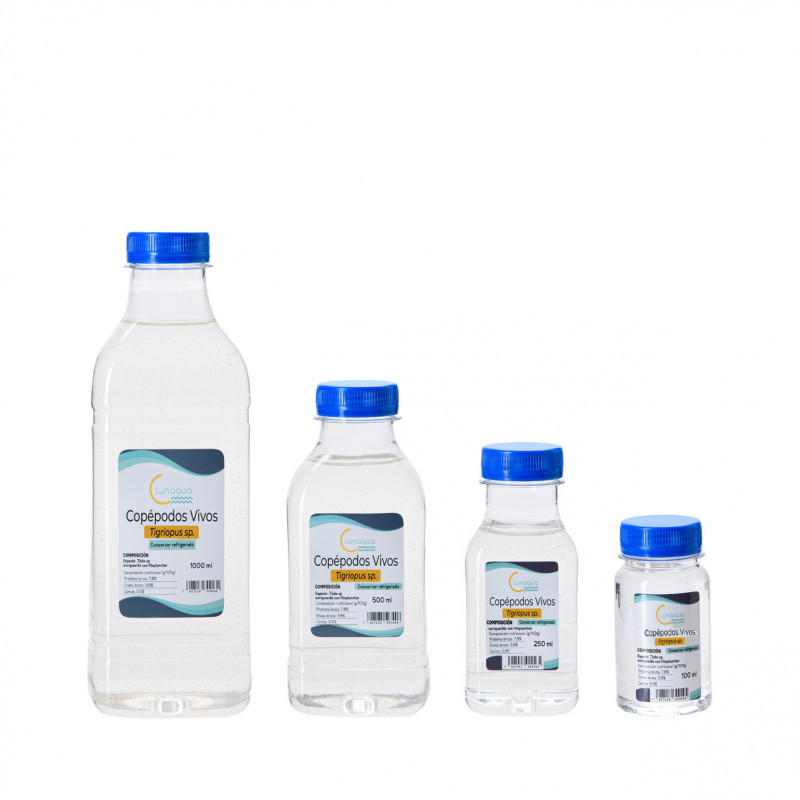More info
Genus: Thisbe
Kingdom: Animalia
Phylum: Arthropoda
Subphylum: Crustacea
Class: Maxillopoda
Subclass: Copepoda
Order: Harpacticoida
Kingdom: Animalia
Phylum: Arthropoda
Subphylum: Crustacea
Class: Maxillopoda
Subclass: Copepoda
Order: Harpacticoida
General characteristics
These small crustaceans make up more than 70% of the zooplankton components in all seas and are free-living organisms.
Its size ranges from 0.2-2.5mm.
They are able to swim but due to their small size they cannot define their own destiny and are carried away by water currents, which is why they are part of the plankton.
They feed on phytoplankton (microalgae) and serve as food for organisms of higher trophic levels, including fish, among others.
They have benthic habits, which allows them to be kept at high densities
High reproductive potential (high fecundity and short generations)
Their characteristic zig-zag movement is an important visual stimulus for many fish
They reproduce sexually (separate sexes) and go through six larval nauplius stages and five copepodite stages before moulting into adults.
Its size ranges from 0.2-2.5mm.
They are able to swim but due to their small size they cannot define their own destiny and are carried away by water currents, which is why they are part of the plankton.
They feed on phytoplankton (microalgae) and serve as food for organisms of higher trophic levels, including fish, among others.
They have benthic habits, which allows them to be kept at high densities
High reproductive potential (high fecundity and short generations)
Their characteristic zig-zag movement is an important visual stimulus for many fish
They reproduce sexually (separate sexes) and go through six larval nauplius stages and five copepodite stages before moulting into adults.
Nutritional value
Copepods are the organisms that have given the best results in feeding fish larvae of many species in aquaculture, above brine shrimp or rotifers. This is due to the high levels of polyunsaturated fatty acids such as DHA, EPA or arachidonic acid. The level of DHA in wild copepods can be up to ten times higher than in enriched Artemia. They do not need to be enriched like other organisms (Artemia or rotifers) to have nutrients, innately they already contain a high and optimal nutritional quality.
They have high levels of protein (42-52%) with an adequate profile of amino acids and fatty acids. It is important what they are fed to have the right nutritional profile for the purpose we pursue.
They have high levels of protein (42-52%) with an adequate profile of amino acids and fatty acids. It is important what they are fed to have the right nutritional profile for the purpose we pursue.
Advantages of copepods as food
-
Enhances the natural color of fish and crustaceans.
-
Strengthens the body's immune system.
-
They are especially useful with some aquarium inhabitants who are more delicate in their diet, either because they are sick or because they do not accept inert food.
-
Copepods in marine fish larval culture have been shown to ensure normal development with improved growth and survival by greatly reducing disease, malformation and abnormal pigmentation.
-
Being benthic and therefore sticking to the substrate it finds (rocks, glass, bottom,...) it facilitates the feeding of slow-swimming fish such as Synchiropus.
When to use copepods and what for
-
They are an excellent food source for somewhat more delicate fish: corals and other invertebrates such as anemones, fish larvae, seahorses, mandarin fish and Anthias fish
-
If our purpose is to create more zooplankton in our aquarium, we must add them at night so that they are not eaten immediately after adding them.
-
They are the best option to restore appetite in sick fish or fish that do not eat, especially mandarins, pipe fish, seahorses and fish that do not accept inert food.
-
They feed on aquarium detritus, microalgae, crushed feed,...
-
Always add the contents of the bag to the end opposite the tank's water outlet.
Reviews
No customer reviews for the moment.




